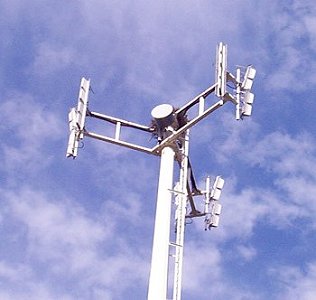










 |
 |
 |
 |
 |
 |
 |
 |
 |
 |
| Since its initial Alberta rollout in 1985
with two carriers (AGT Mobility & Cantel) using an
analogue-based system, the cell phone industry has evolved and grown
into a product and service that have become almost essential to our
everyday lives. Now, 38+ years later we have multiple carriers offering
various services marketed towards key consumer segments. There are a
number of carriers that build and maintain physical networks; Bell,
Rogers, Telus, Freedom, although there
are many brand names reselling services on those networks (see notes
below). The table below also outlines the
technology breakdown of the carriers and their physical networks. |
| CARRIER (in Alberta) |
NETWORK |
VOICE Frequency Bands (MHz) |
DATA Frequency Bands (MHz) |
 |
3G HSPA1,5 |
1900 |
1900 |
 |
4G LTE8 |
none, VoLTE4
only |
700,
850,
1900, 2100-1, 2600 |
 |
5G |
none, VoLTE4 only | 600,
2100-3, 3500, 3800 |
 |
3G HSPA1,5 |
850 &
1900 |
850 &
1900 |
 |
4G LTE8 |
none, VoLTE4
only |
700, 850,
1900, 2100-1, 2600 |
 |
5G |
none, VoLTE4 only | 600,
2100-3, 3500, 3800 |
 |
3G HSPA5 |
850 &
1900 |
850 &
1900 |
 |
4G LTE8 |
none, VoLTE4
only |
700,
850, 1900, 2100-1, 2600 |
 |
5G |
none, VoLTE4 only | 600, 2600,
3500, 3800 |
 |
4G LTE8 |
none, VoLTE4 only | 700,
2100-1,
2600 |
 |
5G | none, VoLTE4 only | 600, 2100-3 |
| Frequency
Band (MHz) |
Band
Name |
LTE/5G
Band |
real-world max data speed (meg) |
| 600 |
RRBS
- Remote Rural Broadband System |
71 |
20 |
| 700 |
MBS
- Mobile Broadband Service |
12,
13, 17, 29 |
20 |
| 850 |
Cell
- Cellular |
5 |
20 |
| 1900 |
PCS
- Personal Communication Service |
2,
25 |
120-500 |
| 2100 |
AWS
- Advanced Wireless Service |
4,
66 |
120 |
| 2300 |
WCS
- Wireless Communications Service |
30 |
40 |
| 2600 |
BRS
- Broadband Radio Service |
7,
41 |
120-500 |
| 3500, 3800 |
(CBRS)
or FWA 1 |
42,
48, 77, 78 |
300-1200 |
| One huge misconception about LTE and data
speeds is that they will be
super fast. Yes, they can be, and the carriers try to achieve that, but
the reality is
that the LTE data speed at any given time is determined by a number of
variable parameters. Of the top three factors; the first is the
frequency
band you are on, second is how good the signal is, and third is network
congestion. |
